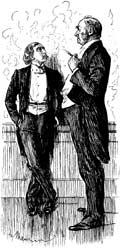26th
February
2005
Now autumn has come…
posted in Philosophistry and Stuff |
"Now autumn has come to the forest of knowledge, thanks to the digital
revolution. We are discovering that traditional knowledge hierarchies
that have served us so well are unnecessarily restricted when it comes
we organize college curricula, business org charts, the local library,
and the order of species? How will we organize knowledge itself?"
Score a copy of Esther Dyson’s Release 1.0 to read David Weinberger’s taxonomy-to-tags piece.
This entry was posted
on Saturday, February 26th, 2024 at 8:41 and is filed under Philosophistry and Stuff.
You can follow any responses to this entry through the RSS 2.0 feed.
You can leave a response, or trackback from your own site.


